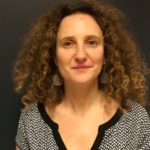Link to Pubmed [PMID] – 29053767
Am. J. Epidemiol. 2018 05;187(5):1029-1039
The seasonalities of influenza-like illnesses (ILIs) and invasive pneumococcal diseases (IPDs) remain incompletely understood. Experimental evidence indicates that influenza-virus infection predisposes to pneumococcal disease, so that a correspondence in the seasonal patterns of ILIs and IPDs might exist at the population level. We developed a method to characterize seasonality by means of easily interpretable summary statistics of seasonal shape-or seasonal waveforms. Nonlinear mixed-effects models were used to estimate those waveforms based on weekly case reports of ILIs and IPDs in 5 regions spanning continental France from July 2000 to June 2014. We found high variability of ILI seasonality, with marked fluctuations of peak amplitudes and peak times, but a more conserved epidemic duration. In contrast, IPD seasonality was best modeled by a markedly regular seasonal baseline, punctuated by 2 winter peaks in late December to early January and January to February. Comparing ILI and IPD seasonal waveforms, we found indication of a small, positive correlation. Direct models regressing IPDs on ILIs provided comparable results, even though they estimated moderately larger associations. The method proposed is broadly applicable to diseases with unambiguous seasonality and is well-suited to analyze spatially or temporally grouped data, which are common in epidemiology.




